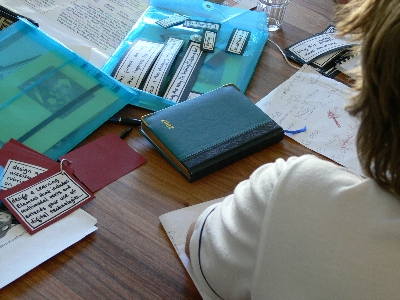Learning is effective to the extent to which it engages with learner identities. These are deeply diverse, complex and multilayered. Learner differences should be measured and taken into account both in terms of the dimensions of ‘gross demographics’ and the more subtle and variable ‘lifeworld attributes’.
|
Second Order Differences: Gross Demographics |
First Order Differences: Lifeworld Attributes |
|
Material
Class: social resource access, employment
Locale: neighbourhoods and regions with
Family: relationships of domesticity and Corporeal
Age: child development, life phases and
Race: historical and social constructions linked
Sex and Sexuality: the bodily realities of
Physical and Mental Abilities: spectrums of Symbolic
Language: first and second language learners,
Ethnos: national, ethnic, indigenous and
Gender: identities based on gender and |
Narratives – of the given
Life experiences Belonging
Personae – identity
Dispositions Sensibilities
Affinities – attachments
Networks Interests Stances Values Worldviews
Orientations – to the new
Epistemological Learning Discursive Interpersonal
|
Learning, however, is not simply about recognizing and affirming difference.
Learning is a journey away from the learner’s comfort zone, leaving the relative narrowness and limitations of the life world. As much as learning needs to affirm identity and create a sense of belonging, it is also a process of travelling away from the familiar, everyday world of experience. This journey is one of personal and cultural transformation.
These, then, are the two conditions of learning in a context of deep and multifaceted diversity:
- Condition 1: Effective learning engages the learner’s identity. It builds on the learner’s knowledge, experiences, interests and motivation. In any learning community, there is a great deal of diversity, and this is because the everyday lifeworlds from which students come are always varied. A pedagogy of BELONGING brings this diversity into the classroom, values it and uses it as a resource for learning.
- Condition 2: Effective learning takes the learner on a journey into new and unfamiliar terrains. However, for learning to occur the journey into the unfamiliar needs to stay with a zone of intelligibility and safety. At each step, it needs to travel just the right distance from the learner’s lifeworld starting point. A pedagogy of TRANSFORMATION takes learners out of their comfort zones, as a result of which they form new frames of understanding, ways of meaning, capacities to act and expressions of identity.
How the Learning by Design Approach Addresses Learner Diversity
The Learning by Design project addresses learner diversity in a number of ways, including:

- The Learner Resource side of the Learning Element is designed for self-paced individual learning, or self-managed group learning. All learners do not have to be on the same page at the same time.
- Entry points: The Learning Element asks the question of prior learning on the assumption that the answer will not be the same for all.
-
The Knowledge Processes bring diversity into the learning experience:
- Experiencing the Known: bringing in students’ diverse experiences.
- Experiencing the New: always at a carefully measured distance from what students already know (intelligibility).
- Analysing Critically: measuring human interests is always against your own perspective.
- Applying Appropriately: taking what you have learnt back to your own world of everyday experience.
- Applying Creatively: bring the multiple perspectives and experiences of your life together in a creative way. - The mix of Knowledge Processes allows different emphases and activity types as appropriate to students’ different ‘learning orientations’.
- All the Knowledge Processes also change direction of the knowledge flows and the balance of responsibility for learning toward a more active view of learning-as-engagement—in this context, learner identities and subjectivities become more manifest.
- Learning is conceived as a journey, in a transformational (rather than static) view of diversity. The learner, for instance, may travel from everyday Experiencing the Known, to depth and breadth perspectives (Conceptualising, Analysing), and back to the everyday world by Applying Appropriately or Creatively—by which time neither the world nor the learner are quite the same as they were when the journey began.
- Learning Outcomes: Assessment is not of the right/same answers or one correct way to do things, but comparable performance in relation to standards. You don’t have to do the same work to be doing equivalent work.
- Exit points: The Learning Pathways question at the end of the Learning Element assumes that this may be answered in different ways for different learners.
